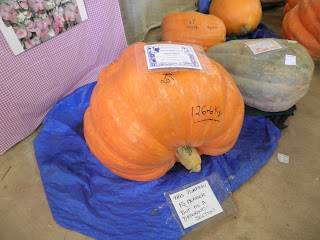Tuesday, July 30, 2013
Art - Enlarging / Reducing a Drawing
To Reduce
Draw a similar framework
to the original,
in lead pencil,
but make the squares
to a smaller measurement,
to the size that you require.
* Original
Have your drawing,
or a copy of your drawing
if you want to preserve your original.
Draw a framework around it,
using a lead pencil,
of evenly spaced grid lines,
making squares.
To Enlarge
Draw a similar framework
to the original,
in lead pencil,
but make the squares
to a larger measurement,
to the size that you require.
- Notice where the lines
of your original drawing
cross the grid lines.
- In the new framework,
mark, in lead pencil, with a dot,
where you estimate
these cross over points would be.
- Join the dots up into the shape
of the original drawing,
in lead pencil.
- If leaving the drawing in pencil,
carefully rub out the grid lines.
- If wanting the drawing in pen,
re-work it in pen first,
and when dry,
carefully rub out the grid lines.
- If need be,
adjust the enlarged or reduced drawing
to match the shape of the original.
(c) Katherine Stuart 2013
Saturday, July 27, 2013
The Darwin Show
On Friday (26 July 2013) I went to the Darwin Show.
(Darwin, Northern Territory, Australia)
(Darwin, Northern Territory, Australia)
It took me the whole day to get around and see everything,
without trying to do it too fast,
the idea being to enjoy the day.
But, I ended up being pretty dusty by the end of it!
Below is a selection of photos, to give an idea of what the day was like.
 |
| Inside the showgrounds |
 |
| Horse events |
Sunday, July 21, 2013
Art - Building Up a Picture
Choose a simple scene that you would like to paint.
I chose the beach.
I had to paint this scene a number of times,
before I was able to produce the result above,
using -
The Concept of Layering
This is where brush strokes overlap previous brush strokes,
or overlay the previous brush strokes entirely.
(This was outlined in the previous worksheet:: Art - Edges)
To build up this picture, I followed these steps -
1 - Sky
Starting at the top,
I worked down to the horizon,
fading the colour with more water.
2 - Beach
Starting at the bottom,
I worked up to the wave line,
and beyond (to go under the sea colour)
fading the colour with water.
3 - Sea
I started at the horizon
working downwards,
fading the colour with water over the sand colour,
so that the sand colour could be seen,
and down to the wave line.
4 - Wave foam
I dobbed, placed small dots,
of the colour mixed with some water,
along the wave edge.
(c) Katherine Stuart 2013
Tuesday, July 9, 2013
Darwin Beer Can Regatta
Darwin Beer Can Regatta
at Mindil Beach
(Darwin, NT Australia).
For those who don't know,
it started in 1975 after Cyclone Tracey,
to get everyone together
to have a good time,
lift spirits,
and get rid of some of those beer cans!

As the boats are supposed to be made
entirely of left over beer cans.
Some boats were and some weren't.
There was a sandcastle competition,
an ironman race,
children's running races, and,
women's and men's thong (shoes) throwing competitions.
 |
| Wimbeertin (Wimbledon) |

And then there was
the Open Water Boat Race
(beer can boats), and,
the Battle of Mindil
where all the boats went out
(not very far)
throwing water and flour bombs
at each other
while having to dive for an e-perb.
I don't know if they found it.
Here are most of the boats.
(c) Katherine Stuart 2013
Monday, July 8, 2013
Art - Painting Tips
- Dark colours are a bit overpowering,
and it's hard to tell what they are,
so I mute them with a bit of white.
- Acrylic paint dries a little darker than when it is wet.
However I found that,
the dark colours change more than the light colours.
- In dry weather,
add a small amount of water to mixed acrylic paint,
as you go,
to keep it spreading easily,
otherwise it becomes thick and unmanageable.
- Paint in the colours from lightest to darkest.
This helps not to mix colours on the paint brush.
Darker colours hide the lighter colour residue,
but lighter colours don't hide the darker residue as easily,
both on the paint brush,
and on the painting.
(c) Katherine Stuart 2013
Subscribe to:
Comments (Atom)













